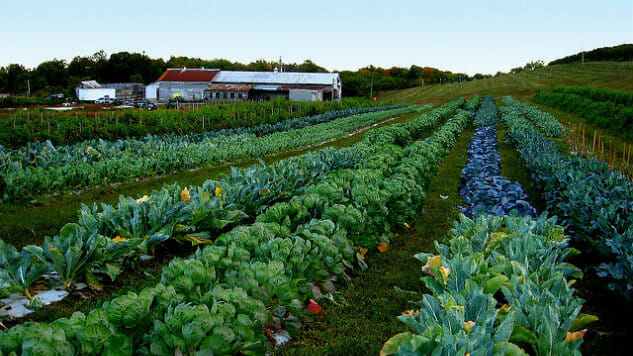Learn the Real Food Miles in 4 Asheville Farm-to-Table Restaurants

Food miles is a fuzzy term, used to describe how far a kind of food had to travel to get to its final destination. There are more than a few ways food miles can be calculated, and even more ways to justify having fewer of them, though the typical example is like this: if a pound of food is made the same way, with the same inputs, 1000 miles away and 10 miles away, it’s better to buy the one only 10 miles away. Even if they are priced the same, supposedly more money is going into farmers pockets and other pockets in the food-supply chain if you ‘eat local’ and the fossil fuel manufacturers don’t get anything.
There are many other arguments that favor eating local food: shorter transport time often can mean more nutrients or flavor still being in the food when it reaches a person’s table, and less transport costs can make it a little more painless to splurge on organic, grass-fed, or other designations within food production. Overall, it seems ideal for a healthy food system to support at least some local production, given that rising prices for fuel will have a much greater impact on the 1000-mile-away food than on the 10-mile-away food.
This is not to say that every close-by food is a best buy — some food is much more intensive to cultivate in certain climates, and the fossil fuels expended in growing the food might actually be higher than the transport could cost. There are good and not so good ways to view food miles, but knowing more about where our food comes from makes decisions better and sometimes easier. If you know more about the foods that are efficiently produced near you, though, you might be able to get the best of both worlds.
One kind of restaurant is making food’s origins more transparent for their visitors: farm-to-table restaurants. Sure, their reputation for freshness, delicious combinations, and rustic comfort makes them a slam-dunk among the earth-loving crowd, but I thought I’d look into a few F-to-T restaurants in a popular market, Asheville, North Carolina, and see where the food actually comes from and how far it travels.
I begin with a disclaimer: all distances were determined using information on menus and websites of the restaurants and the Google Maps distance to the sources; this is already way more information than people usually get about the origins of their food, so there is a margin for error and many of these products might be even more local than I was able to deduce. I hope, rather than fixating on the specifics of each restaurant, the numbers open your eyes to one way you can learn more about what is truly local in your area, even if it isn’t Asheville, North Carolina.
Chestnut
At Chestnut, you can get a lot of items that have travelled only a few miles; for instance, the Sunburst Farm trout came from approximately 28 miles away. There are also delicacies, like the Manchester Farm Quail, hailing from 173 miles south of the restaurant, or cheese selections from nearby spots like the Round Mountain Creamery 27 miles away.
-

-

-

-

-

-

-

-

-

-

-

-

-

-

-

-

-

-

-

-

-

-

-

-

-

-

-

-

-

-

-

-

-

-

-

-

-

-

-

-








































